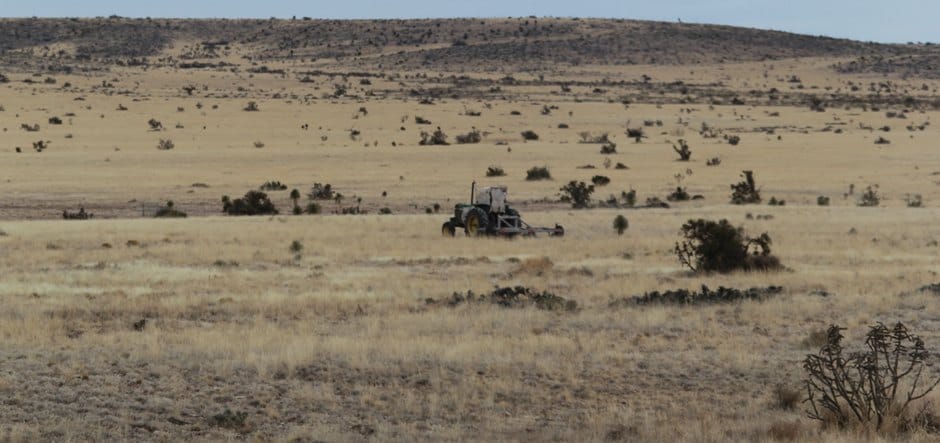Restoring Water Function: What is Keyline Contouring?

We are currently completing 1,000-acres of subsoiling in one of our northern pastures at the Circle Ranch. This is a very effective tool for us, when used in conjunction with planned grazing.
Many people ask:
- What is Yeomans Keyline?
- What is Keyline Contouring?
Here is how its inventor, the Australian manufacturer and conservationist P.A. Yeomans described it 60-years ago.
“In a smooth grassy valley, a location called the Keypoint can be found where the lower and flatter portion of a primary valley floor suddenly steepens. The — Keyline — of this primary valley is revealed by pegging a contour line through the keypoint, within the valley shape. All the points on the line are at the same elevation as the keypoint.
Contour plowing parallel to the Keyline, both above and below will automatically become “off-contour” but the developing pattern will tend to drift rainwater runoff away from the valley centre and incidentally, prevent erosion. Keyline pattern cultivation on ridge shapes is done parallel to any suitable contour but only working on the upper side of the contour guide line. This automatically develops a pattern of off-contour cultivation in which all the rip marks left in the soil will slope down towards the centre of the ridge shape. This pattern of cultivation allows more time for water to soak in. Keyline pattern cultivation also enables controlled flood irrigation of undulating land, which further assists in the fast development of deep biologically fertile soil, which results in improving soil nutrition and health.
In many countries including Australia, it is important to get optimum absorption of rainfall and Keyline cultivation does this as well as delaying the potentially damaging concentration of runoff. The Yeomans technique differs from traditional contour plowing in several important respects. Random contour plowing also becomes off contour but usually with the opposite effect on runoff water causing it to quickly shed off ridge shapes and be concentrated in valleys. The limitations of the traditional system of soil conservation, with its “safe disposal” approach to farm water was an important motivational factor in the development of the Keyline system.”
